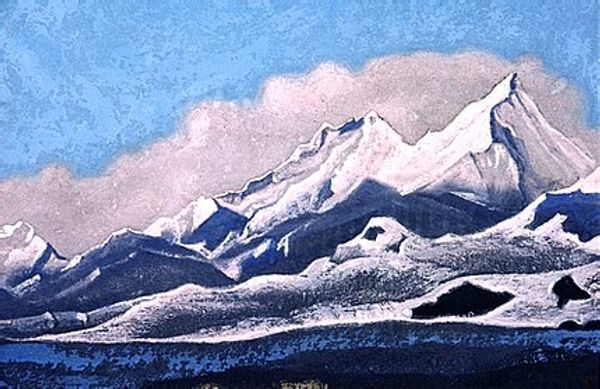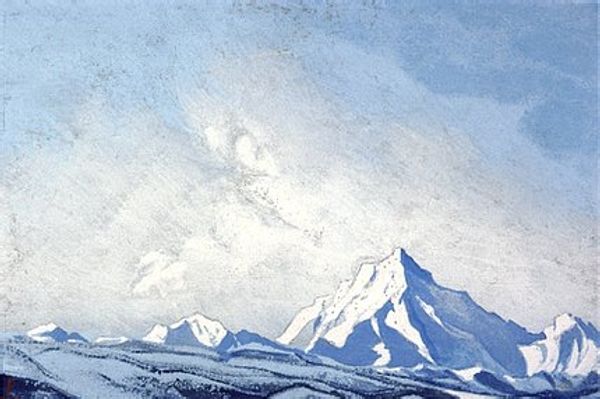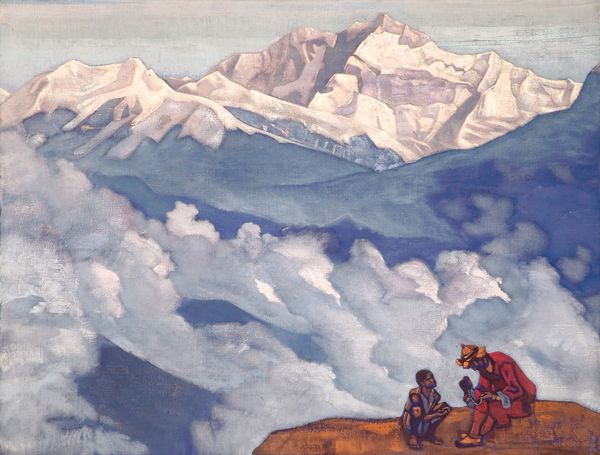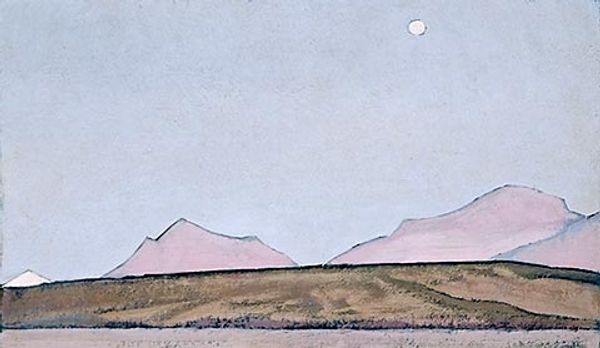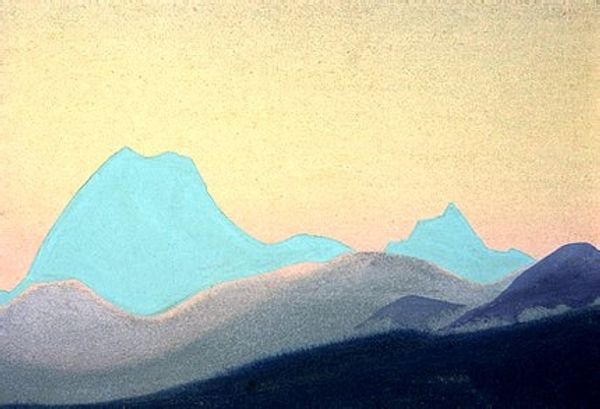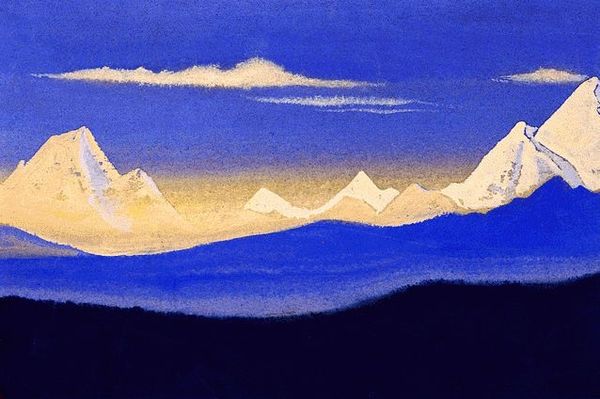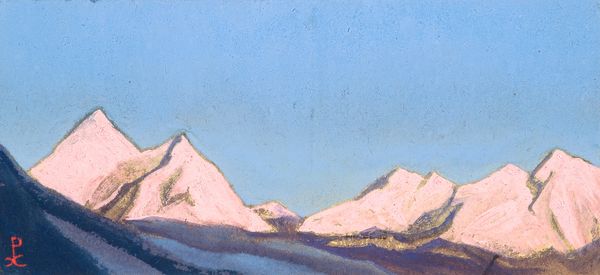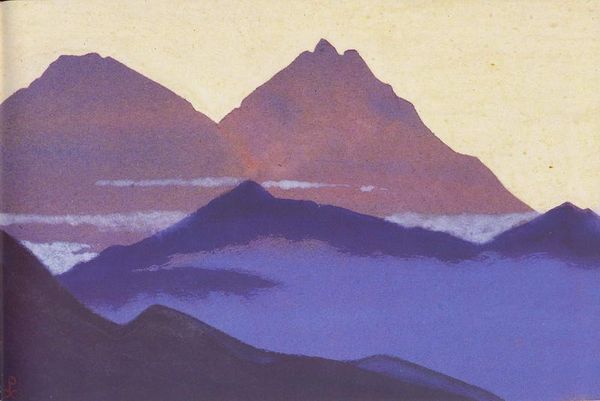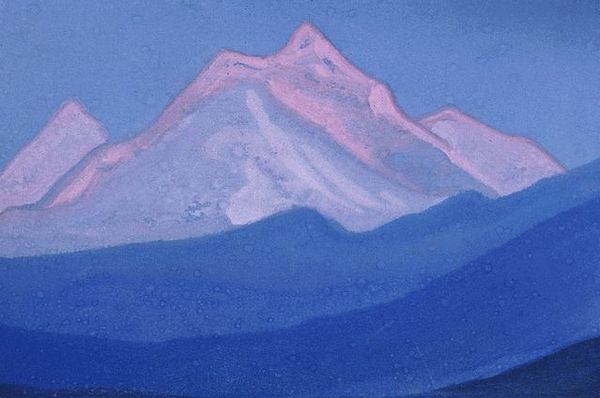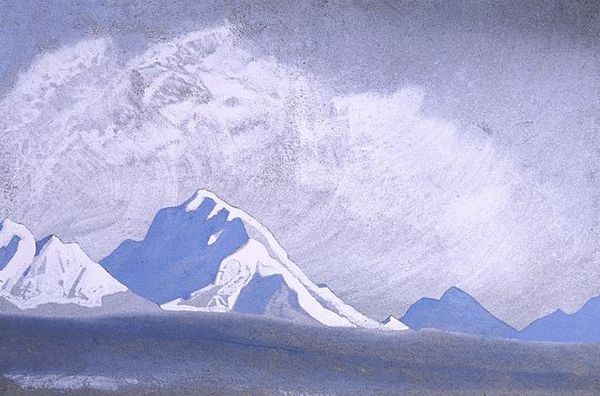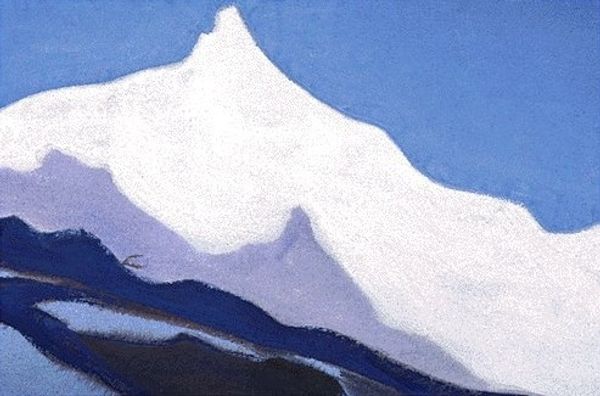
Copyright: Public domain
Editor: Nicholas Roerich's "Lonely Wanderer," painted in 1944, rendered in oil paint, presents a serene landscape dominated by a majestic mountain. The pervasive use of blue evokes a feeling of solitude and vastness. How do you interpret the formal elements of this piece? Curator: Notice the stark contrast between the cool blues dominating the foreground and background and the pure white defining the mountain peak. This sharp value contrast directs the eye upwards, emphasizing the mountain's imposing presence and creating a hierarchical visual structure. Also, the application of paint: consider the texture, see how its visible brushstrokes almost give the mountain a feeling of luminescence, like its radiating light. Editor: The small figures and animals seem almost like afterthoughts. Do they contribute to the overall composition? Curator: Precisely. The size of the figures emphasizes the monumentality of nature, thus the insignificance of mankind. The composition relies on this play between the miniscule figures versus the grandeur of the mountainscape. How might we discuss the importance of horizontal and vertical balance here? Editor: You're right; the verticality of the mountain balances the horizontal landscape, preventing the painting from feeling flat. That light draws the eye upward, which emphasizes this monumentality you mentioned earlier. Curator: An interesting observation. So, reflecting on our conversation, how do form and composition come together to create the work’s specific mood? Editor: I see now how the formal elements - color, contrast, scale - work together to give us this evocative sense of solitude, and awe of the natural world.
Comments
No comments
Be the first to comment and join the conversation on the ultimate creative platform.
